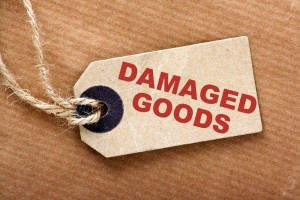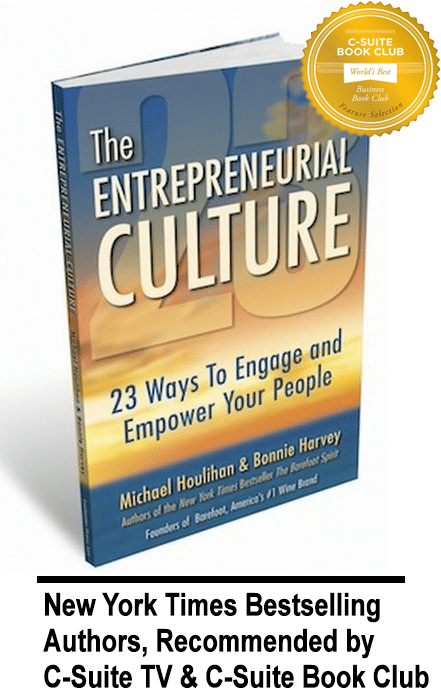
Space is at a premium in retail stores. You are lucky to get shelf space at all, let alone more than one space or “facing.” Brands can get pushed around by the competition, mispriced by the store, not reordered even though they are selling well, and stay in the back room and never make it to the shelf. So just “making it to the shelf” is an achievement.
You work your way up from the bottom shelf, where folks generally don’t look, to the eyelevel shelf. Eyelevel is the most coveted real-estate in the store because it’s where the customer naturally looks. We used to say, “If you’re not in their face, you’re not in the place!” But now that you made it, anything that is wrong with your label or packaging works against you.
For one thing, you can’t be in every store to inspect every one of your products, although you should try! Even though you have great quality control in your production facility, once it leaves the condition of your label is in the hands of folks who can scratch it, scuff it, and stain it between the back room and the shelf.
That label damage can impact sales in many ways:
- First Impressions. A scuffed or otherwise compromised label or package can turn off a potential first time customer. “The product is still good; it’s just the label that got a little scuffed.” You want to say that, but you can’t! So customers buy another product with a pristine label.
- Sales Blocking. If you have only one space on the shelf, you are at the mercy of the condition of the label that’s in front of your narrow line of products. If that label isn’t perfect, she won’t pull that one out and grab the one behind it. She will buy another brand. The sales of all your other products lined up single file behind the one in front with the scuffed label are stopped.
- Spoils Pick Ups. The retailer will eventually notice that your sales have stopped and want to discontinue your product. But you will send a representative to that store to see why sales have stopped. You will have to pick up what the retailer considers spoils, or damaged goods if you want to continue in his store.
- Lost Customers. You can even lose previously loyal customers due to a scuffed label. They may feel the quality is going down and try another brand in your category, like it, and leave you. All because of a damaged package.
- Deliberate Damage. We sometimes discovered deliberate damage from competitors who knew the effects of an imperfect label. This is yet another reason for constant vigilance at the store level.
Here’s a tip we found very useful: If the label got scuffed, it was usually on the edges. So we avoided the appearance of most label scuffing with labels that were white on the edges, the same color as the paper underneath the printed image. Thus, many of the scuffs were not visible because we allowed a lot of white space around the edges.
But there’s no replacement for actually being there at the shelf once a week!
Who We Are

Michael Houlihan and Bonnie Harvey co-authored the New York Times bestselling business book, The Barefoot Spirit: How Hardship, Hustle, and Heart Built America’s #1 Wine Brand. The book has been selected as recommended reading in the CEO Library for CEO Forum, the C-Suite Book Club, and numerous university classes on business and entrepreneurship. It chronicles their humble beginnings from the laundry room of a rented Sonoma County farmhouse to the board room of E&J Gallo, who ultimately acquired their brand and engaged them as brand consultants. Barefoot is now the world’s largest wine brand.
Beginning with virtually no money and no wine industry experience, they employed innovative ideas to overcome obstacles, create new markets and forge strategic alliances. They pioneered Worthy Cause Marketing and performance-based compensation. They built an internationally bestselling brand and received their industry’s “Hot Brand” award for several consecutive years.
They offer their Guiding Principles for Success (GPS) to help entrepreneurs become successful. Their book, The Entrepreneurial Culture: 23 Ways To Engage and Empower Your People, helps corporations maximize the value of their human resources.
Currently they travel the world leading workshops, trainings, & keynoting at business schools, corporations, conferences. They are regular media guests and contributors to international publications and professional journals. They are C-Suite Network Advisors & Contributing Editors. Visit their popular brand building site at www.consumerbrandbuilders.com.
To make inquiries for keynote speaking, trainings or consulting, please contact sales@thebarefootspirit.com.







